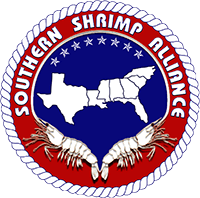In 2012, the government of Japan began to reject shrimp imported from India and Vietnam for the presence of a chemical called Ethoxyquin, a synthetic antioxidant used in fish meal feed as well as many other applications: https://shrimpalliance.com/know-your-supplier-continued-ethoxyquin-nitrofurans-and-chloramphenicol/ In October of that year, the government of India raised concerns regarding the government of Japan’s actions at the Sanitary and Phytosanitary (SPS) Committee of the World Trade Organization (WTO), claiming that the violative residue levels (0.01 parts per million (ppm)) for Ethoxyquin in shrimp was without scientific basis. In response, the government of Japan explained that it was conducting a risk-analysis of Ethoxyquin in shrimp and that the 0.01 ppm tolerance level would be utilized until that risk analysis was complete.
In March 2013, India raised the issue at the WTO’s SPS Committee again, reporting that Japan was inconsistently applying a tolerance level of 1 ppm for fish, including salmon, trout, eel, and tuna, at the same time as it applied the 0.01 ppm tolerance level for shrimp. The government of Japan explained that “[t]here was a concern that Ethoxyquin was genotoxic” and that it “was now conducting additional studies to generate data on the genotoxicity.” Nevertheless, India registered a complaint regarding Japan’s regulatory approach at the WTO’s SPS Committee in June 2013. In response, the government of Japan reported that: “[m]ultiple reports from Japanese authorities, as well as the European Food Safety Authority, had raised concern about the potential genotoxicity of Ethoxyquin.”
In October of 2013, India, through the WTO’s SPS Committee, requested that Japan establish tolerance levels for Ethoxyquin in shrimp based on preliminary assessments made by the Japanese government. Japan, in return, observed that it had prepared a draft assessment report and intended, based on that report, to implement a tolerance level of 0.2 ppm for Ethoxyquin in shrimp – an amount substantially higher than the default 0.01 tolerance level previously applied for shrimp, but five times lower than the tolerance level of 1 ppm for Ethoxyquin in shrimp.
Following this proposed change by the government of Japan, India reported to the WTO’s SPS Committee in October 2014 that the issue had been resolved.
In the back and forth between India and Japan at the WTO, Japan repeatedly referenced the European Union’s similar concerns regarding Ethoxyquin. In November 2015, the European Food Safety Authority (EFSA) published a scientific opinion explaining that while Ethoxyquin itself was not a carcinogenic, p-Phenetidine – an impurity of the additive Ethoxyquin – was a possible mutagen and that officials were not able to “conclude on any safe level of ethoxyquin in feed for target animals.” Further, EFSA’s scientific opinion reported that an estimate of consumer exposure to Ethoxyquin-related residues in animal products was “not possible owing to considerable data gaps.”
Following the publication of EFSA’s scientific opinion, news reports indicate that considerable pressure was brought to bear on the European Union to prohibit the use of Ethoxyquin in animal feed. On June 7, 2017, the European Commission published an implementing regulation that suspended the authorization of Ethoxyquin as a feed additive for all animal species and categories. Although the authorization of Ethoxyquin was suspended, the European Commission explained that it would continue to evaluate data regarding “the safety of use and efficacy of” Ethoxyquin. At the same time, “[s]ince further use of the additive ethoxyquin might cause a risk to human, animal health and the environment, the additive and feed containing it should be withdrawn from the market as soon as possible.”
This means that currently (1) Japan tests for and rejects any shrimp offered for importation that contains more than 0.2 ppm of Ethoxyquin and (2) the European Union has revoked its authorization of Ethoxyquin in any animal feed, including fish meal feed that might be used in aquaculture. The manner in which the European Union’s actions may impact shrimp containing Ethoxyquin imported into Europe is unclear, but what is clear is that the European Union is operating under enhanced concerns regarding the prevalence of Ethoxyquin.
The concerns shared by the government of Japan and the European Union regarding the safety of Ethoxyquin do not appear to be similarly held by the U.S. government. A September 2015 report from the Center for Food Safety, America’s Secret Animal Drug Problem: How a Lack of Transparency Is Endangering Human Health and Animal Welfare, asserted that the U.S. Food and Drug Administration (FDA) “has long-acknowledged the ‘deleterious and poisonous’ effects of ethoxyquin.” Nevertheless, the Center of Food Safety alleges that while the FDA has “expressed concern about the safety of ethoxyquin, to date it has failed to take meaningful action to reevaluate or restrict the use of the additives.”
At present, Ethoxyquin, as an antioxidant in shrimp feed, continues to be a staple of shrimp aquaculture overseas. Irrespective of the value or threat posed by Ethoxyquin, regulation in the Japanese and European Union markets to prohibit consumer exposure to that chemical will inexorably lead to the diversion of animal products raised on feed using the antioxidant, including shrimp, to the U.S. market. Indeed, heightened testing of harmful antibiotics in Indian shrimp shipped to the European Union – ordered in October of last year – has corresponded to a massive increase in the volume of Indian shrimp entering the United States in 2017.
The United States’ continuing role as the dumping ground for contaminated shrimp produced overseas unnecessarily and unjustifiably threatens the health of American consumers. It also facilitates further harm to the U.S. shrimp industry by attracting ever-increasing volumes of cheap imports shunned by other major importing markets.
Read the WTO’s summary of the SPS Committee proceedings related to India’s complaint regarding Japan’s regulation of Ethoxyquin in shrimp imports here: http://spsims.wto.org/en/SpecificTradeConcerns/View/342
Read EFSA’s published November 2015 scientific opinion on Ethoxyquin here: https://www.efsa.europa.eu/en/efsajournal/pub/4272
Review the European Commission’s Implementing Regulation (EU) 2017/962 of 7 June 2017, suspending the authorisation of ethoxyquin as a feed additive for all animal species and categories here: http://eur-lex.europa.eu/legal-content/EN/TXT/?uri=uriserv%3AOJ.L_.2017.145.01.0013.01.ENG
